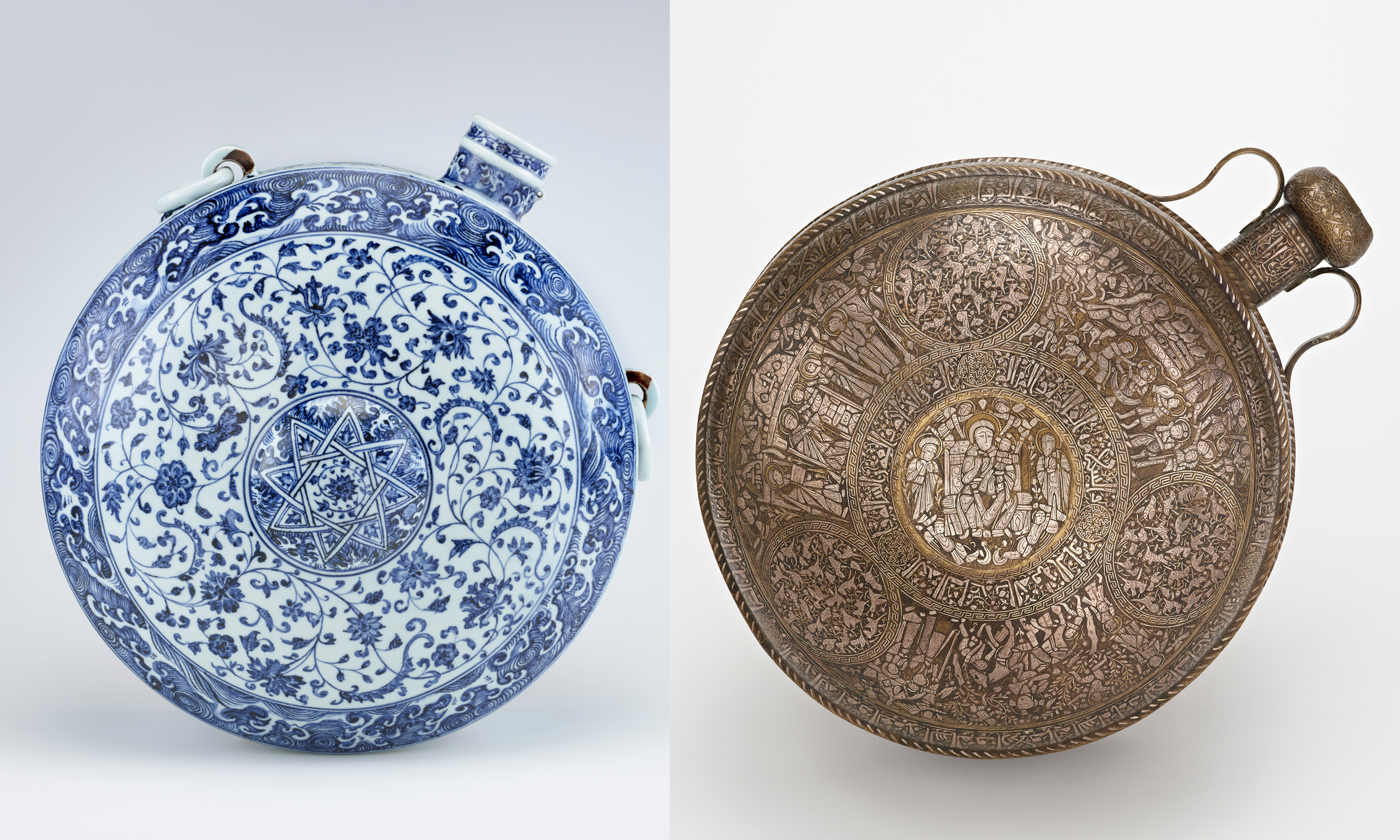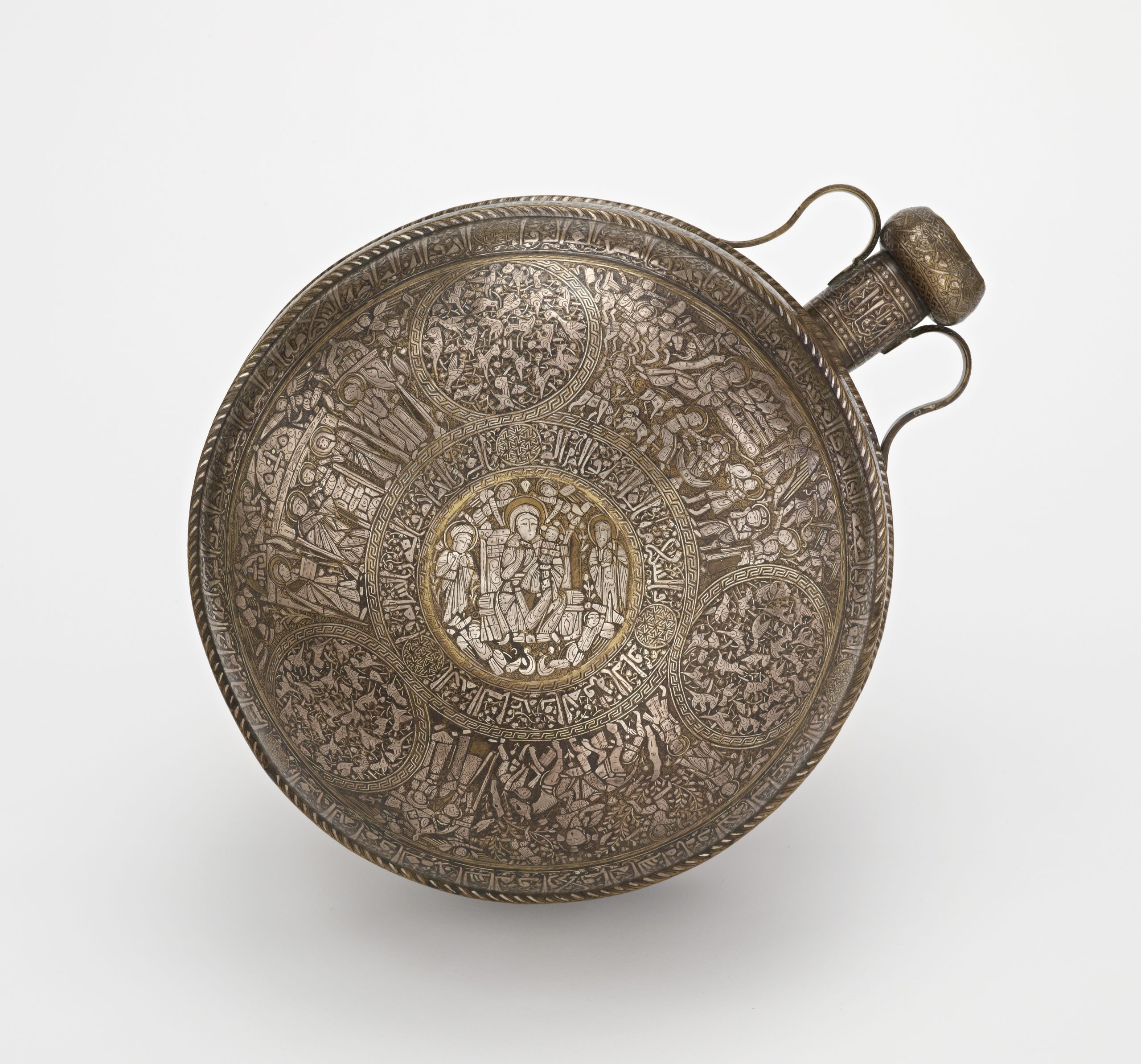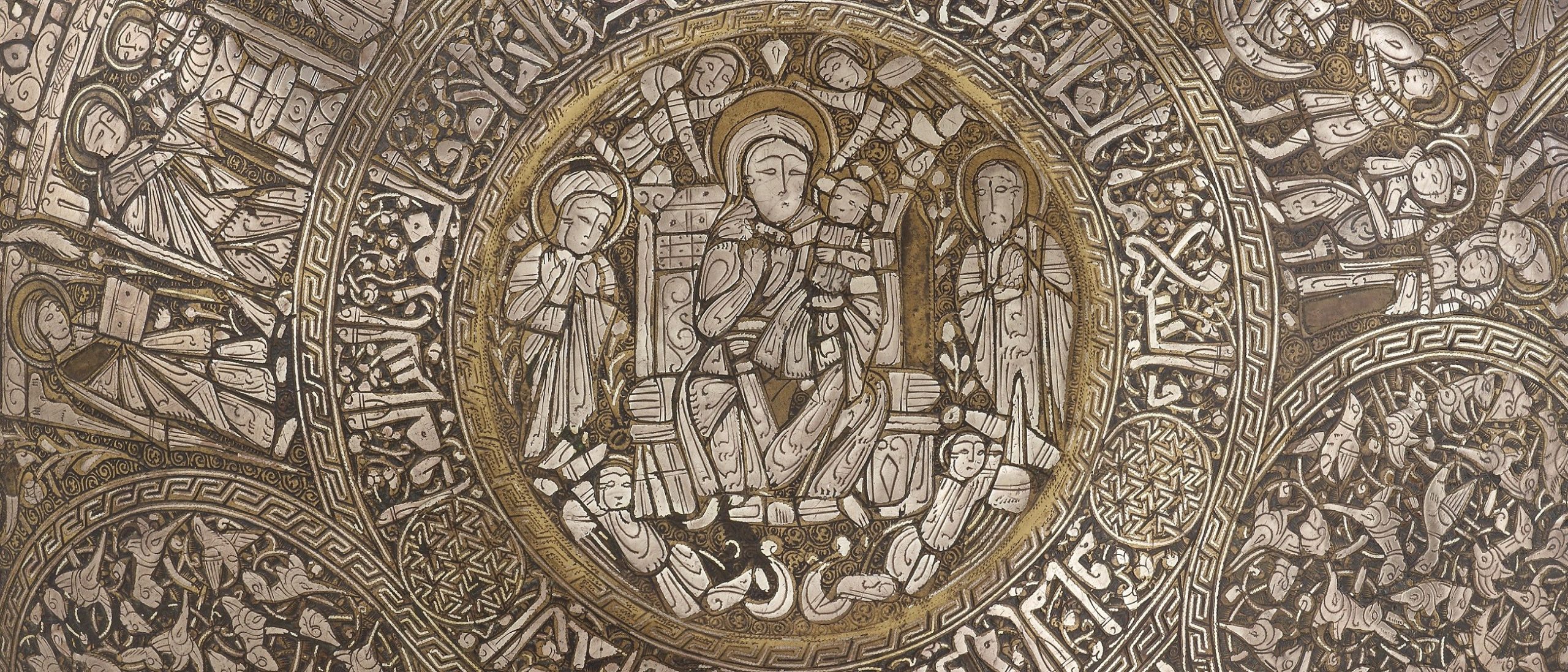canteena vessel or container to carry water or other liquids.: a vessela container such as a cup, bowl, pot, or dish. or container to carry water or other liquids.
glazea thin, glass-like coating made of powdered rocks, minerals, ashes, and water. Applied correctly it makes a clay body impervious after firing. The colors of glaze are determined by the mineral oxides used and various aspects of the firing conditions.: a thin, glasslike coating made of powdered rocks, minerals, ashes, and water. Applied correctly it makes a clay body impervious after firing. The colors of glaze are determined by the mineral oxides used and various aspects of the firing conditions.
Islamic vegetal/vine designan ornament depicting an interlaced pattern of floral or abstract motifs. It is an essential characteristic of Islamic art.: an ornamentan object or motif used for decorative purposes. depicting an interlaced pattern of floral or abstract motifs. It is an essential characteristic of Islamic art.
porcelaina hard, fine-grained, nonporous ceramic ware that is usually translucent and white.: a type of white ceramicpots and other articles made from clay hardened by heat. ware firedthe act of heating pottery in a kiln. at a high temperature. Porcelain originated and was perfected in China before being exported throughout the world.
Silk Roadan ancient network of land and sea trade routes established during the Han dynasty (206 BCE–220 CE) that existed until the middle of the Ming dynasty (1368–1644). These trade routes stretched from China across Asia to the Near East, the Mediterranean, and East Africa.: an ancient network of land and sea trade routes established during the Han dynastya series of rulers from a single family. (206 BCE–220 CE) that existed until the middle of the Ming dynasty (1368–1644). These trade routes stretched from China across Asia to the Near East, the Mediterranean, and East Africa.
symbola shape or design that is recognizable and has a meaning associated with it.: a shape or design that is recognizable and has a meaning associated with it.










